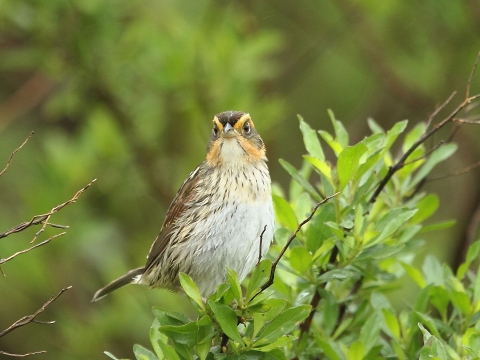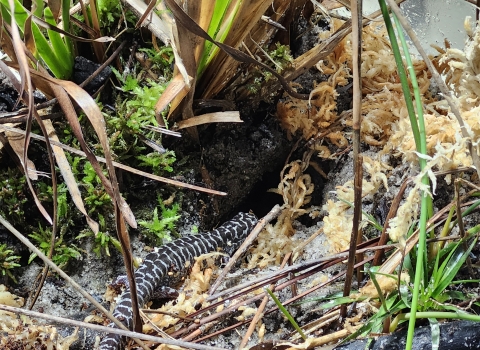Once big enough to fit 1,400 football fields and seasonal home to Indigenous peoples, Great Meadows Marsh has been through a lot in the last four centuries. Now half the size and ailing from historical efforts to drain and fill it, as well as invasion by nonnative plants, the Stratford, Connecticut, salt marsh salt marsh
Salt marshes are found in tidal areas near the coast, where freshwater mixes with saltwater.
Learn more about salt marsh sits powerless against sea-level rise. All but 34 acres, that is.
In 2022, the U.S. Fish and Wildlife Service, Audubon Connecticut, Connecticut Department of Energy and Environmental Protection, National Oceanic and Atmospheric Administration, and the Town of Stratford completed a $4.65-million restoration of a portion of the marsh in the Great Meadows Marsh Unit of Stewart B. McKinney National Wildlife Refuge. The project cleared invasive plants, removed excess soil, re-graded the site, and created new channels to allow seawater to move into and out of the marsh.
For the first time in decades, tides regularly flood the area, nourishing newly planted native salt marsh grasses, wildflowers, and shrubs. With restoration comes increased resiliency to sea-level rise and climate change climate change
Climate change includes both global warming driven by human-induced emissions of greenhouse gases and the resulting large-scale shifts in weather patterns. Though there have been previous periods of climatic change, since the mid-20th century humans have had an unprecedented impact on Earth's climate system and caused change on a global scale.
Learn more about climate change and renewed potential to support rare plants and animals—including saltmarsh sparrow, turtles, and marsh pink—for years to come.
Saltmarsh sparrow populations have fallen sharply in the last decade. At the site, researchers are testing an emerging technique for helping the sparrows. Experimental hummocks—mounds that mimic the high-marsh habitat the birds need—will offer them nesting sites above the rising sea.
The project has reconnected the community to its salt marsh. More than 150 volunteers and a dozen paid high school students planted native species on the reshaped landscape. A reopened trail and two new viewing platforms welcome hikers and bird watchers. Mosquitoes, once the bane of visitors and nearby residents, are fewer and farther between.
Nearly $1 million for the restoration came from Natural Resource Damage Assessment and Restoration settlements with General Electric Corporation, Lordship Point Gun Club, and Raymark Industries, who were responsible for contamination at three nearby sites. Using settlement money to restore the marsh to benefit fish, wildlife and people helps compensate the community for environmental harm at these sites.
The project's benefits reach beyond its boundaries … to the community, the state, and the Atlantic Coast as a whole. Future restorations near and far will be better for the knowledge and experience gained at Great Meadows Marsh.
Read a multimedia ArcGIS StoryMap about the project.






